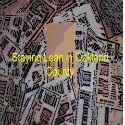I learned from one of the couponing classes I took that there are actually three basic different types of stores and the incentives that are provided will vary by the type of store.
Wholesale Clubs
Wholesale clubs sell items in bulk and generally require a membership fee. Examples of the most popular ones are B J’s, Sam’s Club and Costco. Membership ranges from $30-$50 per year. There is also the warehouse style store here in Michigan Gordon Food Service that does not require a membership. (They also have locations in IL, IN, OH, KY, TN, PA, and FL.) The only coupons accepted at these stores are ones they mail or print themselves usually quarterly or perhaps monthly. The best buys at wholesale clubs tend to be on dairy products, produce and some organic products.
"Always Low" Prices
"Always low” are stores that have everyday low prices without big, weekly sale items. Dollar Stores, Wal-Mart and the local store Sav-A-Lot fall into this category. "Always low" stores are usually the best strategy when you are pressed for time and can only go to one store. Additionally you would want to check these stores if there is something you need but have not found on sale anywhere else or you don’t have a coupon for. Lastly they are good if you have a coupon for an item (Dollar General, Family Dollar, Sav-A-Lot , and Wal-Mart all accept Manufacturer coupons) but need the item and cannot wait for it to go on sale.
"High/Low" Stores
High-low stores typically have higher regular priced items, but offer a loss leader to get customers in the door. A loss leader is a sale item that is deeply discounted because the store is counting on you buying other items to make up for the loss. All of the Pharmacies and most of your local and National Grocery Stores fall into this category. At these stores you will want to only buy the loss leaders and avoid the rest wherever possible.
You will find that when people want to save money generally they go to a Wholesale club and start stockpiling or the will shop at an “Always Low” store and try to get the best prices. The problem is you won’t get the best deals without implementing all three strategies as was mentioned using coupons (and another incentive where possible), stockpiling and buying at the rockbottom price. Once you start couponing you will find (mostly to many people’s surprise) you will shop at the High/Low Stores more often than not. Your stockpile will allow you to shop mostly loss leaders and it will end up being the most cost effective strategy. Granted you may still supplement once in a while I do hit “Always Low” stores and Gordon Food Services now and then. But usually I don’t even need a cart for what I pick up.
Store Incentives
Having a thorough understanding your store’s coupon and sale policies is very important. You will frequently see 10 for $10 sales or 2 for $5. In most cases these are just to encourage you to buy volume in the store and they are priced individually. If it is necessary to buy both to get the sales price the sales tag will state that. Another example is Buy One Get One (BOGO) sales. As previously mentioned some stores ring this up as 1st item full price 2nd item 0 while others ring up both as 50% off. In the latter example you will only have to buy one item if you chose to. For more information on what you would want to know about a store’s coupon policy and why see my post Coupon Policy
Some (in reality most grocery stores in metro Detroit) stores double coupons usually to $.50. This puts them more on par with the “Always Low” stores. If you present a coupon at check out worth $.50 the computer will automatically add another $.50 and a dollar in total will be taken off your bill.
Some stores like the Pharmacies, Meijer and Target have store coupons. Those store coupons can be combined with Manufacturer coupons to increase your savings.
Manufacturers will also run catalina promotions. A catalina is the machine with a blinking light on the other side of the registers that many times gives you coupons on competitor’s products but will also give you coupons on a certain amount off your next order. For instance if you buy 3 of a certain item you will get a catalina coupon for $3 off your next order. These promotions are designed for you to buy more volume and the manufacturer hopes this will build your brand loyalty but overall it can be an incentive and a way to lower your overall monthly grocery bill
Most local grocery stores cycle their sales every twelve to twenty four weeks. This is why it is important to stock up for three to six months at rock bottom prices. By watching the sale ads, you will find which items cycle sooner than others. There are also the seasonal sales cycles that we mentioned. The most effective way to start stocking up is to shop at least two stores regularly. You do not have to shop more than one at a time, but be willing to go to the store that has the best loss leaders. If you prefer to only shop at one store, you will find that most sales will cycle through this store but it will definitely take you longer to build up your stockpile.
This week’s task: Pay attention to sales ads of your local grocery stores and see if you can pick out the loss leaders (usually most are on the front page of the ad)
Subscribe to:
Post Comments (Atom)





























Thank you!
ReplyDelete